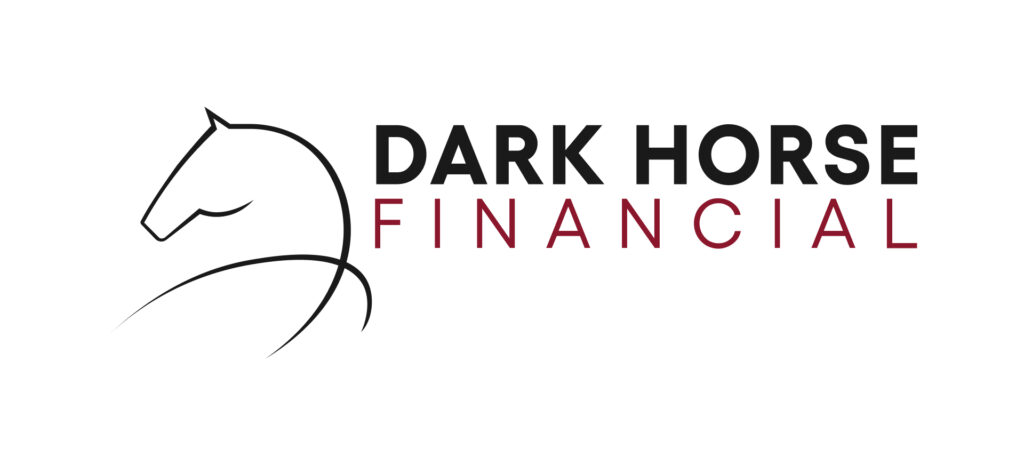Key Takeaways
- Commercial loan refinancing replaces your current loan with a new loan, typically offering better terms, features, or flexibility.
- It can help lower interest rates, reduce repayments, improve cash flow, and unlock equity for business use.
- Businesses often refinance to consolidate debts, restructure repayments, or switch to a more suitable lender.
- The ideal time to refinance is when rates drop, fixed terms expire, equity increases, or cash flow tightens. Businesses can also refinance if their credit score improves.
- Clearly define your refinancing goals, such as accessing equity, lowering repayments, or gaining flexibility.
- If applying at a bank, you must have up-to-date financials, along with ATO ICA & ITA portals and other supporting business documentation for your application.
- Apply for refinancing through Dark Horse Financial. We can help you find loans with the best rates, features, and terms. We can connect you with lenders that can meet your needs.
- After approval and settlement, ensure the new loan is correctly set up and track it against your financial goals.
- A commercial finance broker like Dark Horse Financial can simplify the process, access better deals, and offer strategic advice.
Commercial loan refinancing can be a smart move for many Australian businesses. Whether you’re aiming to reduce interest costs, improve cash flow, access equity, or simply restructure your current financing arrangement, refinancing allows you to take control of your business debt and align it with your current and future needs.
This article outlines the complete process and provides a step-by-step guide to help you understand how to refinance a commercial loan in Australia.
What Is Commercial Loan Refinancing in Australia?
Commercial loan refinancing is the process of replacing an existing commercial or business loan with a new one, typically from a different lender, and often under improved terms. The new loan is used to pay out the original facility, and ideally comes with advantages such as:
- Lower interest rates
- Longer loan terms
- Reduced repayments
- Access to loan features
- The release of equity tied up in property or other business assets
- Consolidation of multiple business debts into one manageable repayment
This process is applicable to a range of commercial loans, including loans used to purchase commercial property, finance equipment, fund working capital, or develop a site.
Why Businesses Refinance Their Commercial Loans
Refinancing isn’t just about getting a lower interest rate, though that’s often a major benefit. Businesses choose to refinance for several reasons:
- Interest Rate Savings: A small reduction in your interest rate, say, from 6.5% to 5.9%, can result in significant annual savings, especially on large balances.
- Improved Cash Flow: Extending the loan term or reducing repayments can ease monthly financial pressure and support day-to-day operations.
- Access to Equity: Businesses may need to draw funds for growth opportunities. If your commercial property has increased in value, refinancing can help unlock equity.
- Better Loan Features: Features like offset accounts, redraw facilities, and interest-only periods may offer more flexibility than your current loan.
- Loan Consolidation: Managing multiple debts across different providers can be challenging. Refinancing helps simplify your financial structure.
- Better Lender Relationship: You may have outgrown your current lender. Switching to a lender more aligned with your business’s size or sector could deliver better service and more tailored solutions.
When Should You Refinance?
Knowing when to refinance is crucial. Here are key indicators that it might be time to explore your options:
- Your current interest rate is significantly higher than comparable market rates
- You’re approaching the end of a fixed-rate period
- Your business has improved its credit profile, allowing you to qualify for better terms
- The value of your security property has increased, improving your loan-to-value ratio (LVR)
- Your cash flow is tight, and you need repayment flexibility
- You want to access equity for expansion, equipment, or acquisition
- You’re managing multiple debts and want to simplify
Businesses should review their loan arrangements at least annually.

What are the Steps to Refinance a Commercial Loan in Australia?
Here’s how to refinance a commercial loan in Australia:
Step 1: Review Your Existing Loan
Start by reviewing the details of your current loan:
- Loan balance and term remaining
- Interest rate and repayment schedule
- Loan type (fixed, variable, interest-only)
- Early repayment or discharge fees
- Features such as offset or redraw facilities
Understanding where you stand will help determine what you want to change.
Step 2: Clarify Your Goals
Next, identify the main reasons for refinancing. Your objectives will help shape the structure and choice of lender. Common refinancing goals include:
- Reducing repayments
- Unlocking equity
- Consolidating debts
- Accessing better features
- Changing repayment structure
Clearly defined goals make the comparison process easier and more meaningful.
Step 3: Apply for Refinancing
Easily apply online through our form. We’ll get back to you shortly and help you assess your financial position to find the best lender and loan product for your commercial loan refinance. Here’s what we can do for you:
- Compare interest rates to ensure you get a lower one than your current loan
- Find a lender that understands your sector and financial situation
- Find loan terms and features that improve upon your current loan
- Assess any fees and ensure that refinancing is worth it
- Streamline your application and guide you through the process
Step 4: Formal Approval
After satisfying all lender requirements, the loan will be formally approved. Next steps include:
- Signing of loan agreements and related documents
- Issuing a discharge request to your current lender
- Repayment of the original loan and drawdown of any new funds
From start to finish, the commercial loan refinancing process typically takes 8-12 weeks for banks and up to 6 weeks with non-bank lenders. Refinancing unsecured loans can normally be completed in a few days.
Step 5: Settlement and Beyond
Once all parties agree on the terms and the loan is disbursed, the loan is considered settled.
However, refinancing doesn’t end at settlement. It’s important to ensure the new loan is operating effectively:
- Confirm that direct debits and repayments are correctly scheduled
- Use offset or redraw facilities to your advantage
- Track performance against your refinancing goals
Annual reviews of your facility ensure it continues to meet your needs and that you remain competitive in a changing lending market.

Common Questions About Commercial Loan Refinancing in Australia
How does commercial loan refinancing work in Australia?
Refinancing is the process of getting a new loan to replace your current one. Ideally, the new loan should have better interest rates, terms, and features, making refinancing a smart financial move that can save you thousands over the life of the loan.
What are the costs involved in refinancing?
Costs may include:
- Discharge fees from your current lender
- Application and establishment fees
- Valuation and legal fees
- Break costs (for fixed-rate loans)
However, these are often outweighed by the long-term savings or benefits of refinancing.
Will refinancing affect my credit score?
A credit enquiry is typically recorded when applying for a new loan. However, provided that you meet repayments on time, refinancing should not negatively impact your credit score.
Can I refinance a loan if my business’s financials have changed?
Yes. While strong financials are important to confirm loan servicing, many lenders consider asset backing, property value, and industry outlook. If your business has experienced a downturn or volatility, a broker can help position your application to improve your chances of approval.
Can I refinance multiple business loans?
Absolutely. Many businesses refinance to consolidate different debts—commercial mortgages, overdrafts, equipment loans—into a single facility. This can simplify repayments and often reduce overall interest.
Can I refinance during a fixed term?
Yes, but break costs may apply. It’s worth calculating the cost of exiting early against the savings from the new loan. A finance specialist can help you run the numbers.
Final Thoughts
Refinancing a commercial loan in Australia is a powerful way to reset your business’s financial footing. If you’re looking to refinance, understanding the steps and having the right guidance is essential.
A well-planned refinance can improve cash flow, lower costs, and give your business greater flexibility and stability. If the current loan no longer meets your needs or if there’s an opportunity to improve your position, refinancing could be a great move for your business.
Refinance Your Commercial Loan
If your financial position or credit score has improved, now is a great time to refinance and secure potentially lower rates and better terms. Dark Horse Financial can help you every step of the way, helping you secure a better loan without hassle.
Disclaimer: Loans and the benefits of loan products are available to approved applicants only. Information on this page is general in nature, it does not take into account your personal situation. This information is not intended to replace professional advice and should not be relied upon for any reason. You should always seek professional advice for finance, tax and accounting matters before making a decision or taking any action.




